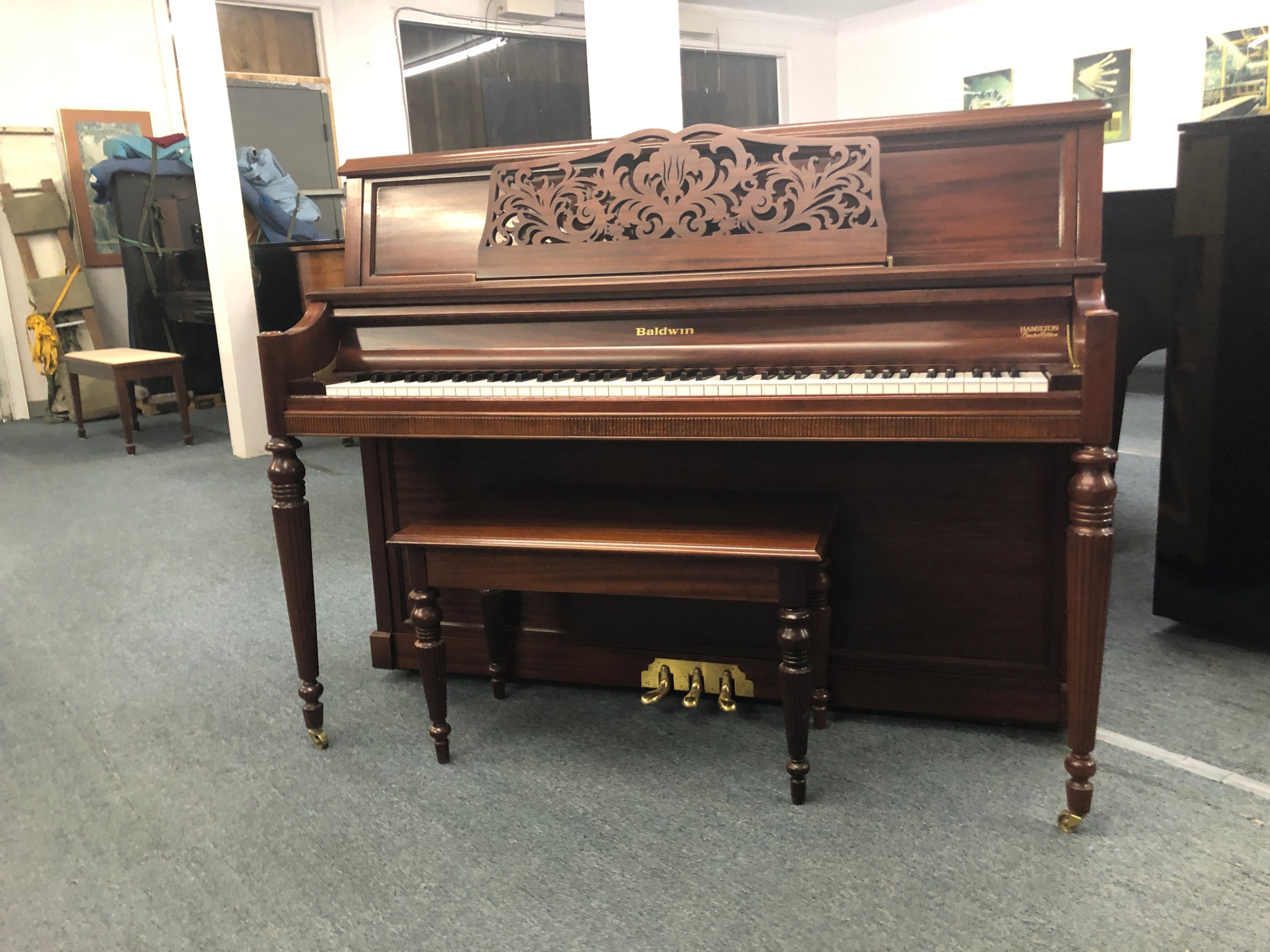


This system of turnbuckles is said to lock the rim in place so that it cannot expand with stress and age, thereby preserving the soundboard crown (curvature).
#BALDWIN HAMILTON VS MASON HAMLIN SERIES#
The tension resonator (illustrated in The Piano Book), invented by Richard Gertz in 1900, consists of a series of turnbuckles that connect to specific points on the inner rim. All Mason & Hamlin grands have certain features in common, including a wide-tail design a full-perimeter plate an extremely thick and heavy maple rim a solid spruce soundboard a seven-ply, quartersawn maple pinblock and the patented tension-resonator Crown Retention System. Internal parts for the verticals are made in Haverhill, then assembled in the company’s Sacramento factory, where it also installs PianoDisc systems. The 50' model 50 vertical piano has also been reintroduced and redesigned, with longer keys for a more grand-like touch, and improved pedal leverage.

The development of these three models was an especially interesting and costly project: in the process, the engineering staff resurrected the original design of each model, constructed new rim presses, standardized certain features, refined manufacturing processes, and modernized jigs, fixtures, templates, and machinery, improvements that afterward were applied to the company’s other models. Then, in fairly rapid succession, came the 6' 4' model AA, the 9' 4' model CC concert grand, and the 5' 4' model B. First came the 5' 8' model A and 7' model BB, both of which had been manufactured by the previous owner. Refinements have been made to the original scale designs and other core design features. Since acquiring the company, the Burgetts have brought back most of the piano models from the company’s golden Boston era (1881–1932) that originally made the company famous. The company emphasizes limited-quantity, handbuilt production, and currently manufactures from 200 to 350 pianos per year. (You can read the somewhat lengthy and interesting history in The Piano Book.) In 1996 the Burgett brothers, owners of PianoDisc, purchased Mason & Hamlin out of bankruptcy and set about reestablishing manufacturing at the six-story factory in Haverhill, Massachusetts. Over the next 85 years, Mason & Hamlin changed hands many times. The company began making pianos in 1881 in Boston, and soon became among the most prestigious of the Boston piano makers.īy 1910, Mason & Hamlin was considered Steinway’s chief competitor. Within a few years, Mason & Hamlin was one of the largest makers of reed organs in the U.S.

Mason was a musician and businessman and Hamlin was an inventor working with reed organs. Pianos made by: Mason & Hamlin Piano Co., Haverhill, Massachusetts Mason & Hamlin was founded in 1854 by Henry Mason and Emmons Hamlin.
#BALDWIN HAMILTON VS MASON HAMLIN SERIAL NUMBER#
If you do not find the serial number in this location, look for an oval opening in the plate – just left of the center of the piano. This will be stamped on the plate of the piano. On Mason & Hamlin upright pianos the serial number can be located on the cast iron plate when you open the lid. A quick web search will reveal if your piano's name alone carries value. Other names of valuable pianos would include: Mason and Hamlin, Boosendorfer, Bechstein, Baldwin, Blunther, Sauter, to name only a few. Even in the worst condition, most Steinway Grand pianos can sell for $5,000 to $15,000 or more.


 0 kommentar(er)
0 kommentar(er)
